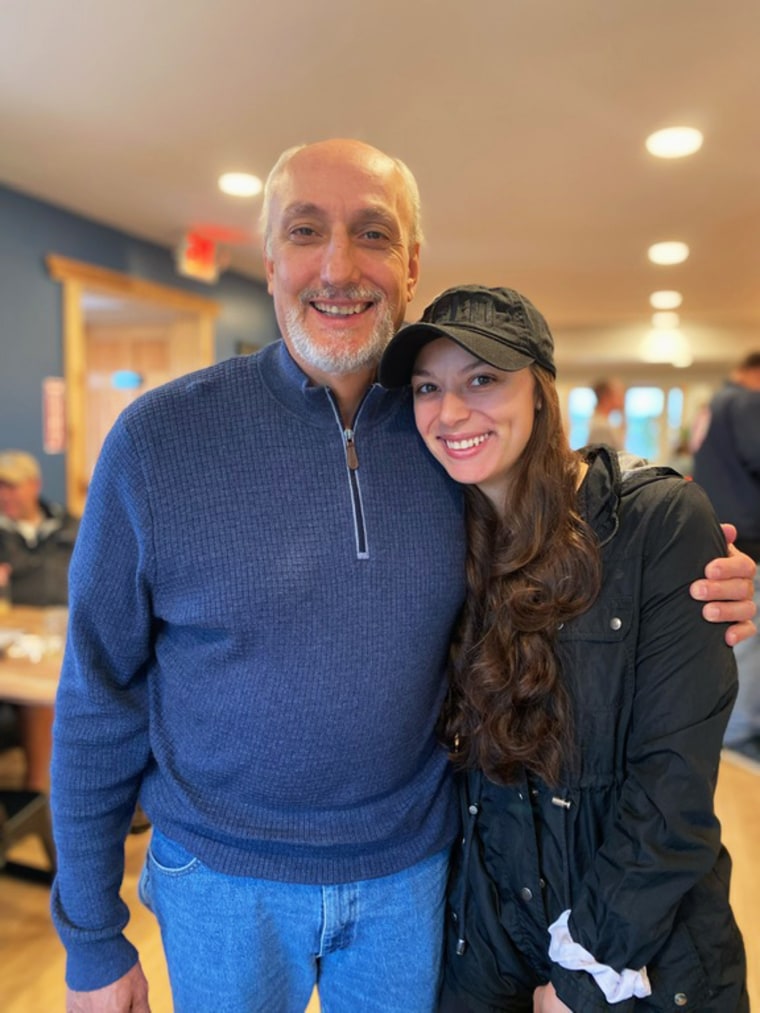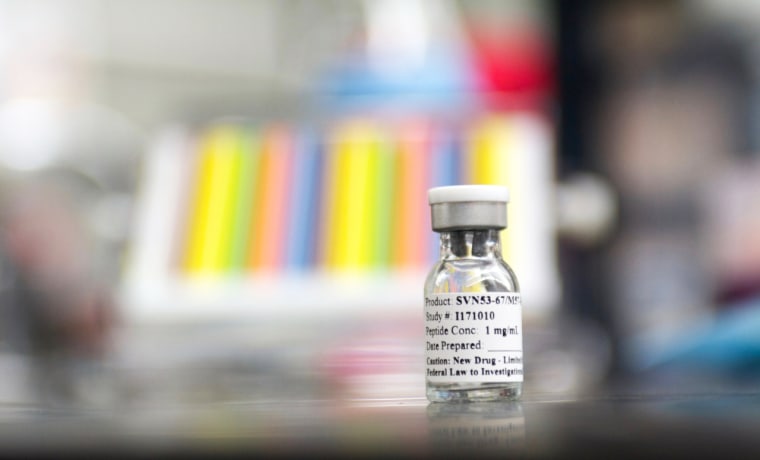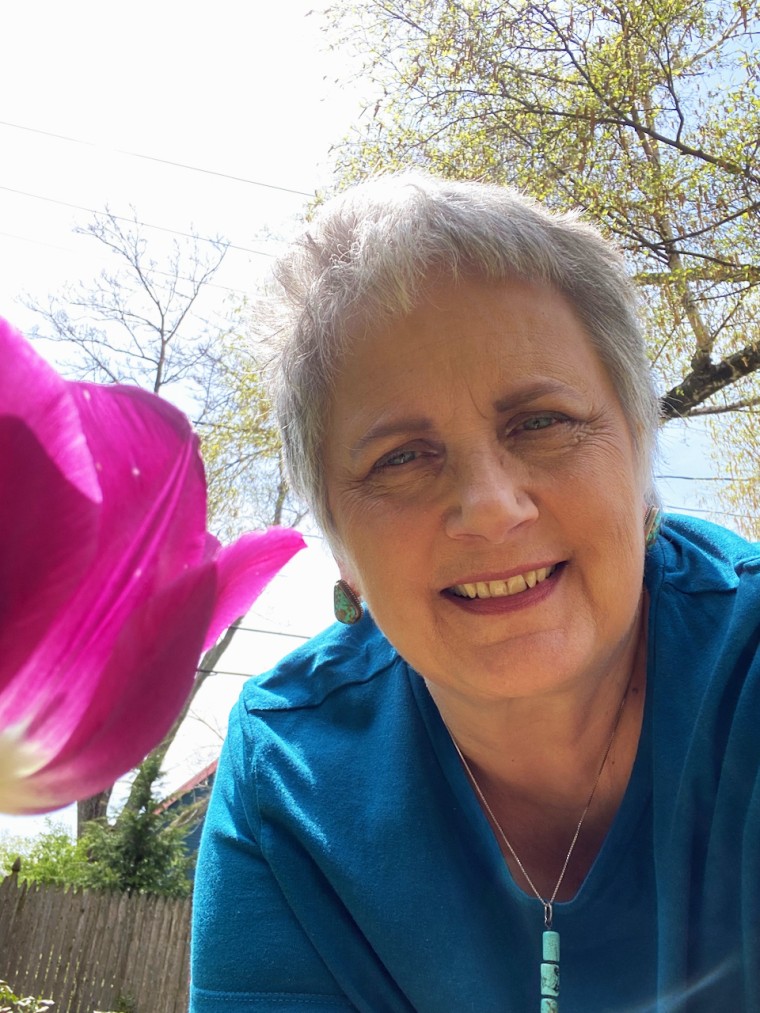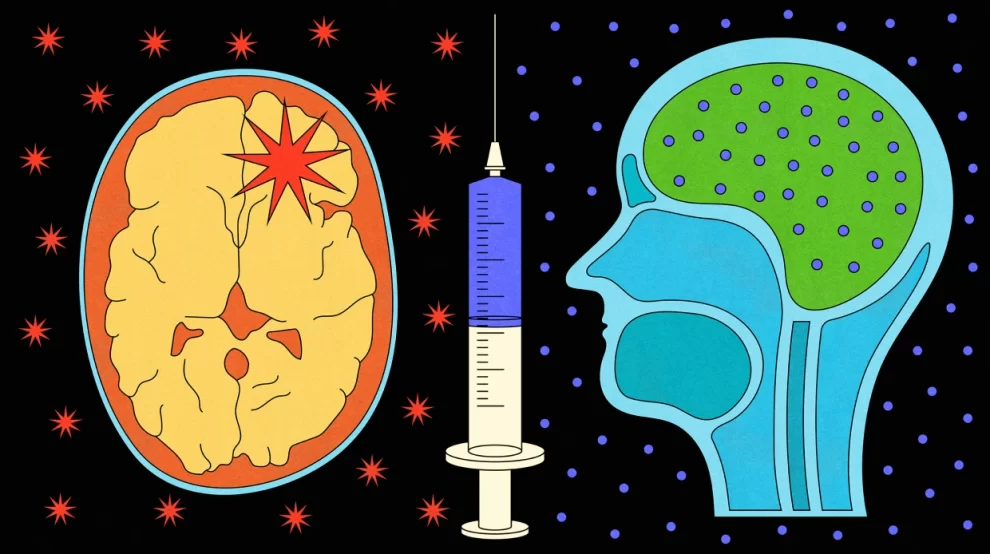John Wishman was diagnosed with the deadliest form of brain cancer, glioblastoma, in fall 2020.
Two and a half years later, he’s still traveling and enjoying life — a rarity for a cancer with an average survival time of just 12 to 18 months.

Wishman, 61, of Buffalo, New York, attributes that to an experimental vaccine that’s designed to delay the progression of the tumor. The vaccine, called SurVaxM, targets a protein found in tumors called survivin, named for the role it’s thought to play in the survival of cancer cells. Get rid of survivin, the thinking goes, and the cancer cells will die.
It sounds like a far-fetched dream: a vaccine that can delay the return of glioblastoma, one of the deadliest and treatment-resistant cancers. More than 14,000 people in the U.S. were diagnosed last year, according to Tom Halkin, a spokesperson for the National Brain Tumor Society, a nonprofit group. It accounts for almost half of all malignant brain tumors. The disease is devastating for patients and families; the five-year survival rate is 6.8%.

Wishman got the vaccine through an expanded access program — sometimes called compassionate use — that allows seriously ill patients to gain access to experimental medicines. His daughter Lydia is a nurse at Roswell Park Comprehensive Cancer Center, where researchers are studying the drug.
In an early clinical trial, SurVaxM was found to extend survival time for people diagnosed with the brain cancer to 26 months, on average. Now the drugmaker, New York-based MimiVax, is enrolling patients in a larger trial, hoping to confirm the results. The expanded access program is no longer available.
The new trial will enroll up to 270 patients. It is expected to take place at more than 10 sites in the U.S. and China and will compare the shot to patients who receive standard care.

Tracey Kassman, 65, enrolled in April 2022, three months after being diagnosed with glioblastoma. That same month, she received her first shot.
Kassman, a retired lawyer from Buffalo, now gets a shot once every two months. But because the trial is randomized and double-blinded, neither Kassman nor her doctors know if she’s getting the vaccine or a placebo.
“It’s been at times a leap of faith,” she said, “because right before I get the shot, I have this MRI, and every time I have the MRI, I’m like, ‘OK, well this could be it.’”
Why is glioblastoma so hard to treat?
Glioblastomas are aggressive cancers: They grow quickly and tend to have invaded other parts of the brain and spinal cord by the time a person is diagnosed.
Surgical removal of the entire tumor is almost impossible.
“It’s like octopus tentacles reaching into other parts of the brain,” said Honggang Cui, an associate professor of chemical and biomolecular engineering at Johns Hopkins Whiting School of Engineering.
Treatment typically involves surgery, chemotherapy and radiation, Cui said. But unless every cancer cell is eliminated, the tumor often comes back in what’s referred to as recurrence.
SurVaxM works by training the immune system to target and attack the cancer cells, so if they do return, the body can pick them off, preventing a new tumor from growing, said Michael Ciesielski, the CEO of MimiVax.

The approach is “promising,” Cui said. “This could bring hope to people who are impacted by GBM.”
Source:NBC NEWS




















Add Comment